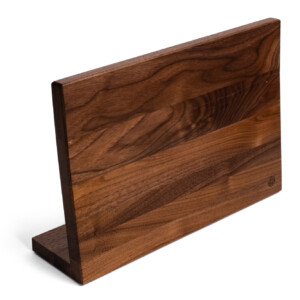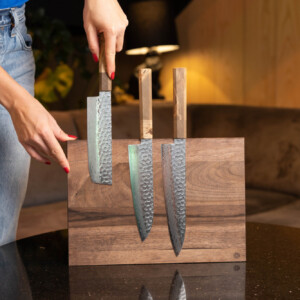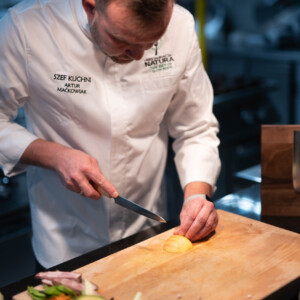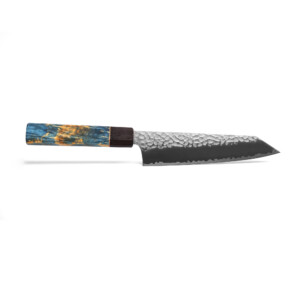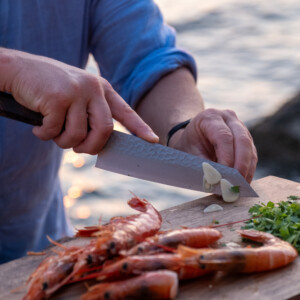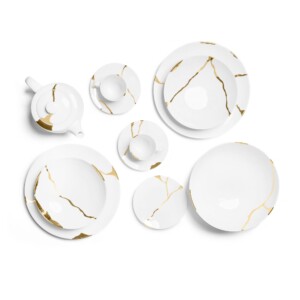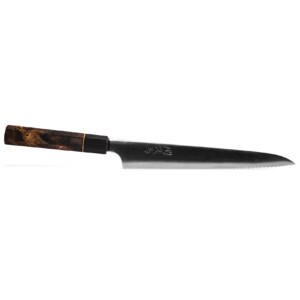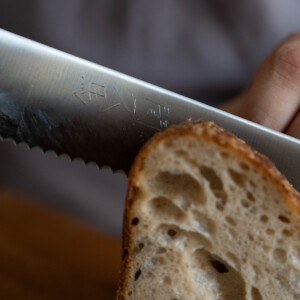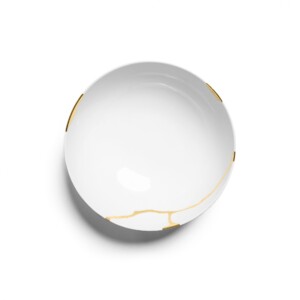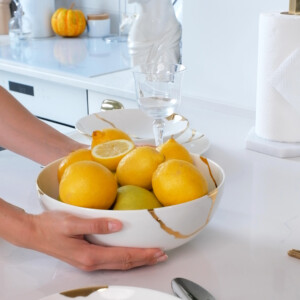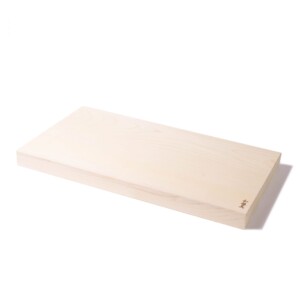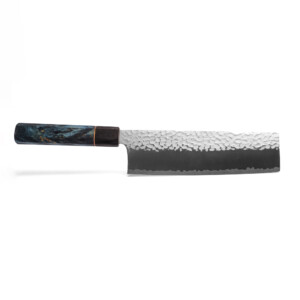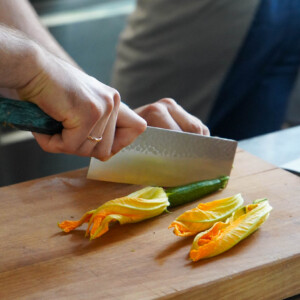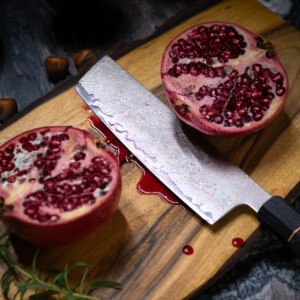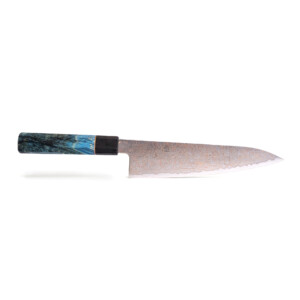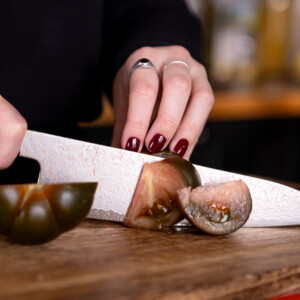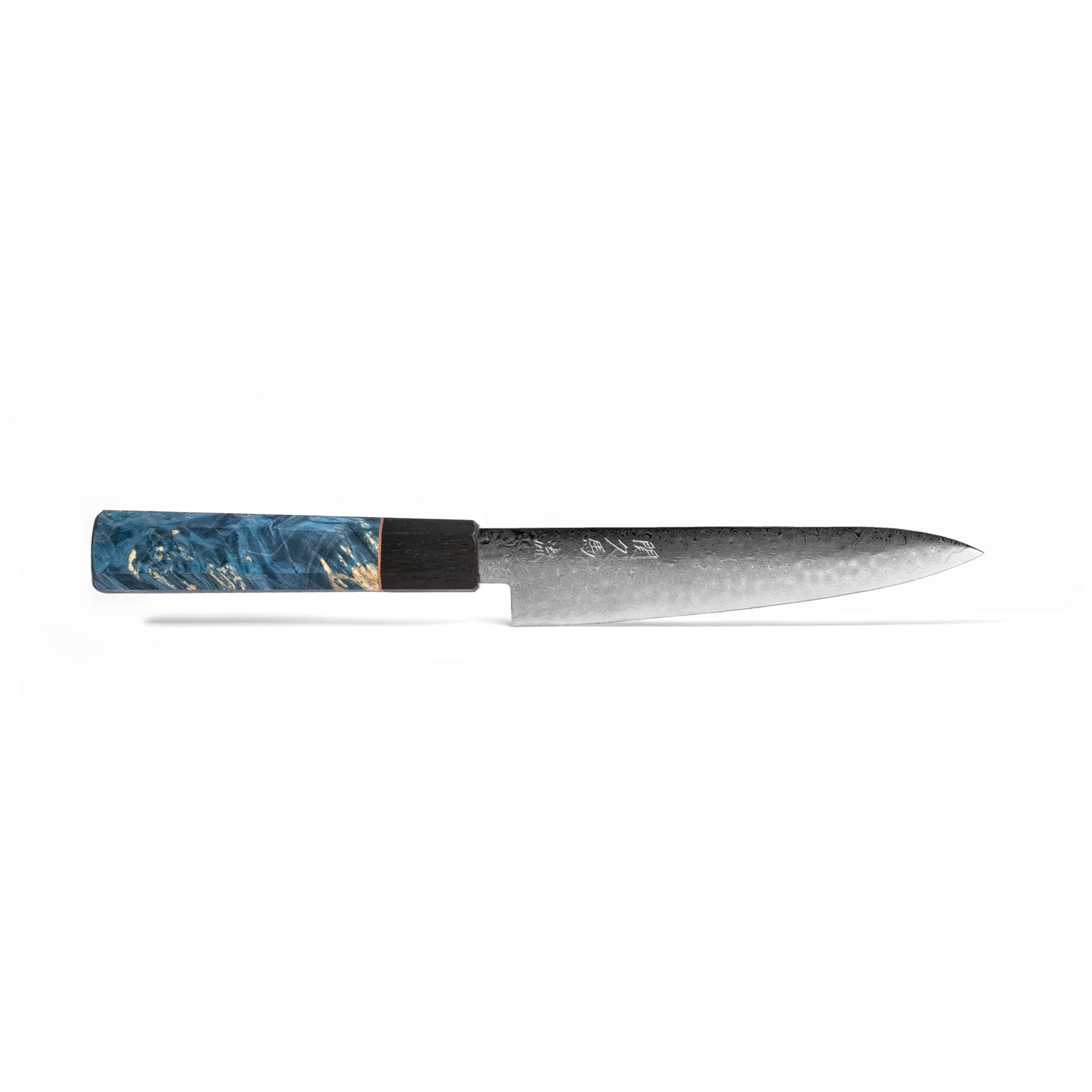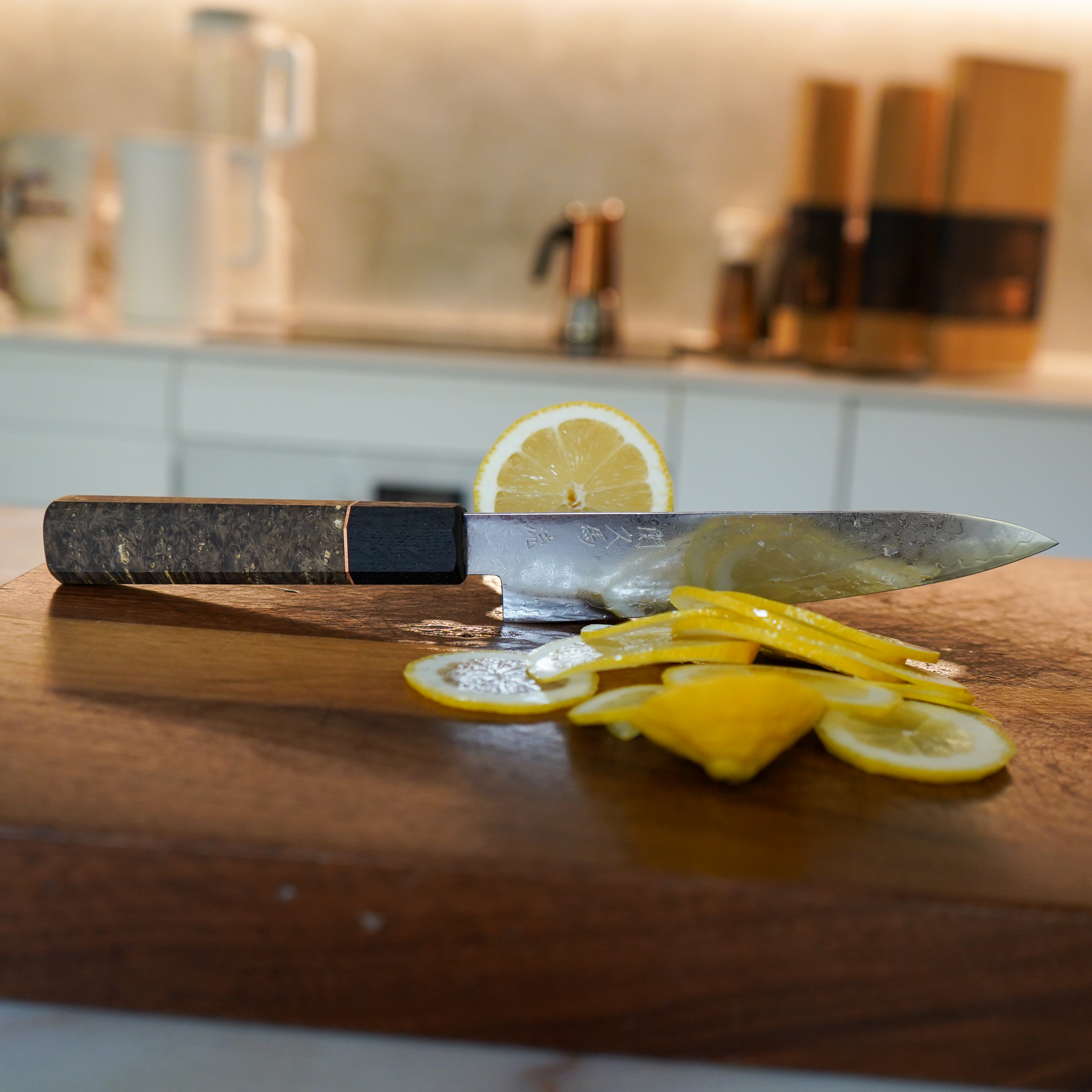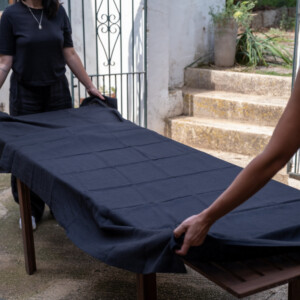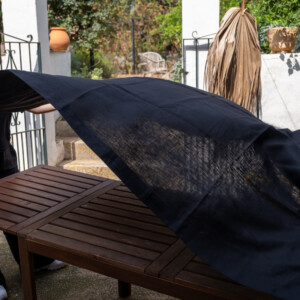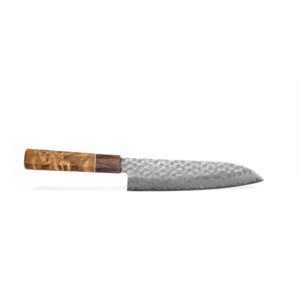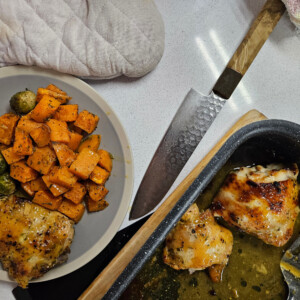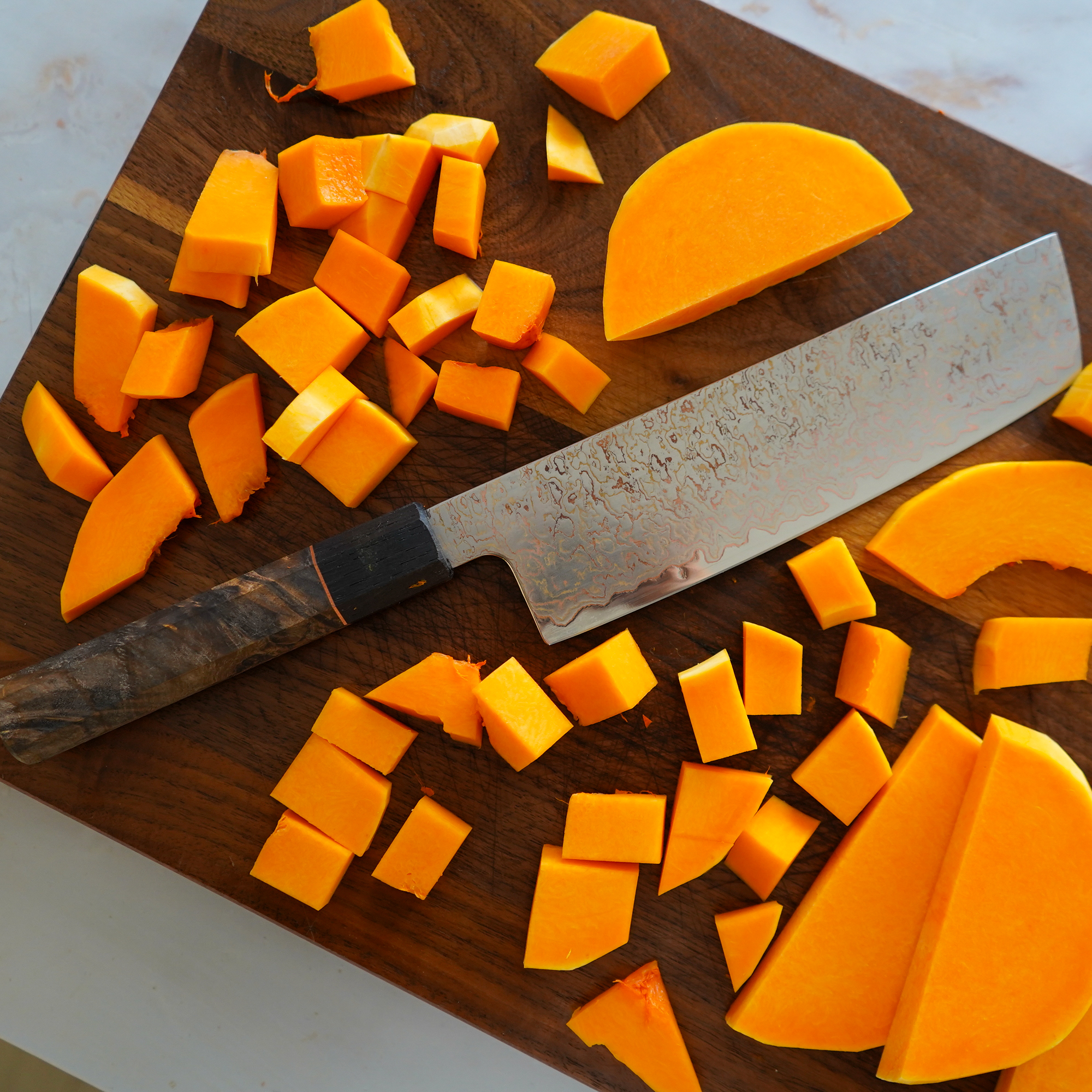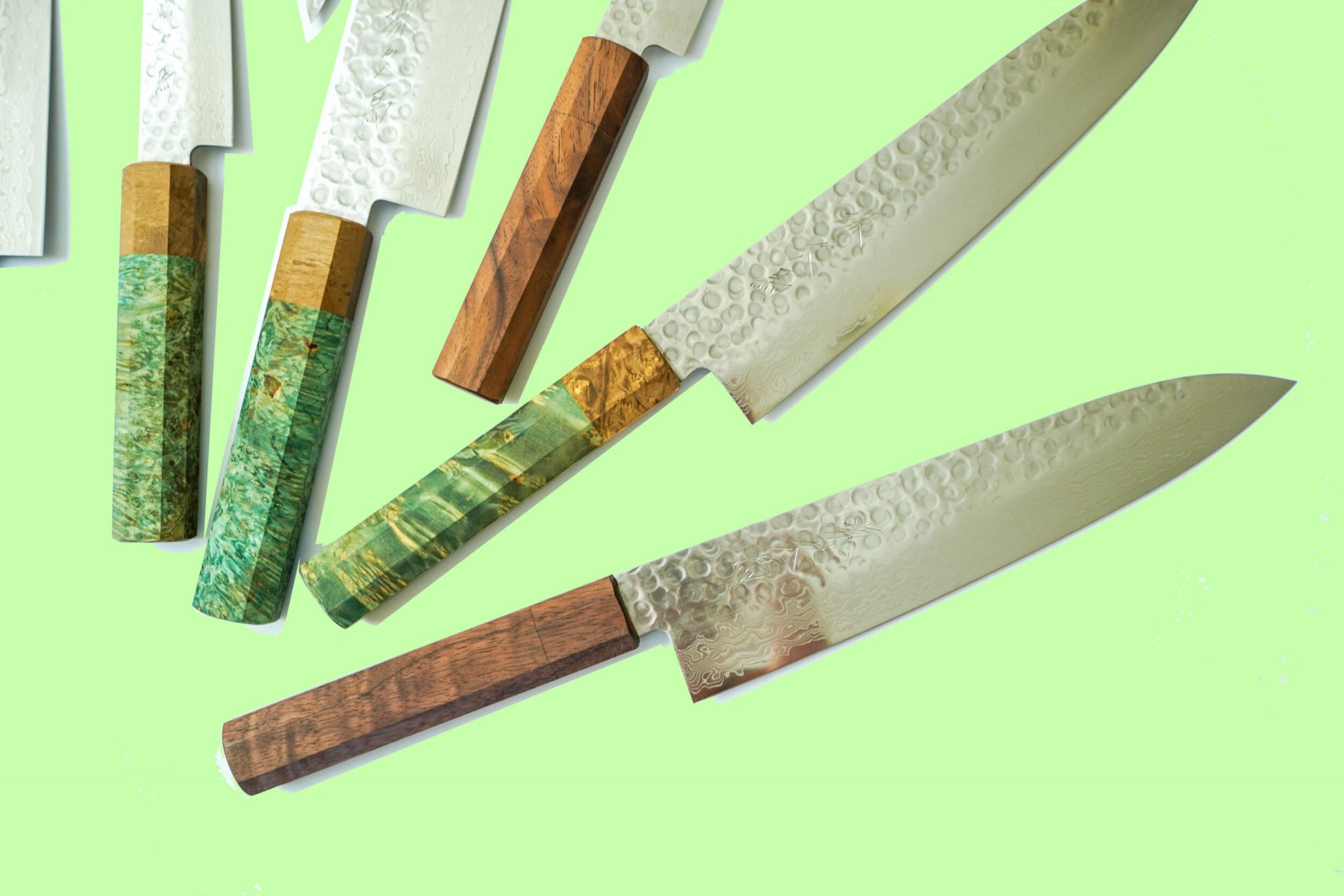Whether you’re a complete beginner stepping into the kitchen for the first time or a seasoned home cook looking to upgrade your knife game, understanding kitchen knives can transform your entire cooking experience. A good knife isn’t just a tool—it’s an extension of your hand, a precision instrument that can make the difference between tedious meal prep and effortless culinary creativity. From selecting your first chef’s knife to mastering proper maintenance techniques, this comprehensive guide covers everything you need to know about kitchen knives.
In this article, we’ll walk you through the essential knowledge every cook should have about knives, complete with practical video demonstrations for each topic. You’ll discover how to choose the right knife for your needs, learn proper cutting techniques that will keep you safe and efficient, and understand the maintenance practices that will keep your knives sharp for years to come. We’ve organized this guide to answer the most common questions home cooks have about knives, so you can quickly find the information you need and start improving your kitchen skills today.
Knife Selection & Buying
If you could only have one knife, what should it be?
If you’re starting your knife collection or can only invest in one quality blade, an 8-inch chef’s knife is the clear winner for most home cooks. This versatile workhorse can handle approximately 90% of your kitchen tasks, from dicing onions and slicing meat to chopping herbs and even crushing garlic cloves. When shopping for your first chef’s knife, prioritize comfort in your hand and look for a sharp, relatively thin blade that feels well-balanced. A quality chef’s knife represents a significant investment that will serve you for decades and dramatically improve your cooking efficiency. Rather than buying a complete knife block filled with specialty knives you may never use, put your money into one exceptional chef’s knife that you’ll reach for every day.
What factors should I consider when buying a knife?
When selecting a kitchen knife, several key factors will determine whether you’ll love or regret your purchase over the years. First, consider the blade material—stainless steel offers low maintenance and durability, while carbon steel provides superior sharpness but requires more care to prevent rust. The knife’s weight and balance should feel comfortable in your hand during extended use, as a poorly balanced knife will cause fatigue and reduce your cutting precision. Handle design is equally important; look for materials that provide a secure grip even when wet, and ensure the handle size matches your hand comfortably. Finally, consider your cooking style and the types of food you prepare most often, as this will help determine whether you need a thin, precise blade or a more robust, heavy-duty option.
How do I choose the right knife for my needs?
Selecting the right knife starts with honestly assessing your cooking habits and skill level rather than getting caught up in flashy marketing or professional chef recommendations. Consider how often you cook, what types of ingredients you work with most frequently, and whether you prefer quick, simple meal prep or more elaborate cooking projects. If you’re a beginner, start with a versatile 8-inch chef’s knife from a reputable manufacturer rather than jumping into specialized Japanese blades or expensive custom knives. Think about your physical needs too—if you have smaller hands or limited strength, a lighter, more compact knife might serve you better than a heavy, professional-grade blade. Most importantly, try to handle different knives in person before purchasing, as the feel of a knife in your hand is more important than any specification on paper.
Should I buy a knife set or individual knives?
Individual knives are almost always a better investment than pre-packaged knife sets, which often include several knives you’ll rarely use alongside one or two you’ll use constantly. Most knife sets are designed to look impressive and fill a knife block, but they typically focus on quantity over quality, meaning you’ll get mediocre versions of many knives instead of excellent versions of the ones you actually need. Start with a high-quality chef’s knife, then add a paring knife and serrated bread knife as your second and third purchases—these three will handle the vast majority of home cooking tasks. As your cooking evolves and you identify specific needs, you can add specialty knives like a boning knife or cleaver on an as-needed basis. This approach allows you to invest more money in the knives you’ll use daily while avoiding the clutter and expense of rarely-used specialty blades.
How do I know if a knife is high-quality?
High-quality knives reveal themselves through both immediate feel and long-term performance characteristics that become apparent with use. A well-made knife should feel substantial but not unnecessarily heavy, with perfect balance that makes it feel like an extension of your hand rather than a tool you’re fighting against. The blade should be uniformly sharp out of the box, cutting through paper cleanly without tearing, and the edge should maintain its sharpness through regular use for months rather than weeks. Examine the construction quality—look for smooth transitions between blade and handle, consistent blade thickness, and finish work that shows attention to detail. Research the manufacturer’s reputation and read reviews from actual users rather than just professional chefs, as home cooking needs can differ significantly from restaurant demands. Finally, consider the warranty and customer service reputation, as quality knife makers typically stand behind their products with generous repair and replacement policies.
Are there specific knives for different types of cuisine?
While certain knife styles are traditional to specific cuisines, most home cooks can successfully prepare dishes from any culture using a basic set of well-chosen knives. Japanese cuisine does benefit from specialized knives like yanagiba for sashimi or santoku for general prep work, but a sharp chef’s knife can handle most Japanese cooking tasks effectively. Chinese cooking traditionally uses a cleaver for everything from delicate vegetable work to breaking down poultry, but again, a chef’s knife and paring knife combination will serve most home cooks better. The key is understanding that traditional knives evolved for professional kitchens and specific cultural cooking methods—as a home cook, versatility and comfort should take priority over authenticity. If you develop a serious passion for a particular cuisine and find yourself frequently frustrated by your current knives’ limitations, then investing in specialized tools makes sense, but start with quality basics first.
What should I look for in a knife handle?
Your knife handle is your primary connection to the blade, so comfort and security should be your top priorities when evaluating options. The handle should feel secure in your grip even when your hands are wet or oily, which means avoiding overly smooth materials that become slippery during use. Size matters significantly—a handle that’s too large will reduce your control and precision, while one that’s too small will cause hand fatigue during extended prep sessions and may lead to accidents. Consider the handle shape and how it fits your natural grip; some people prefer traditional Western handles, while others find Japanese-style octagonal handles more comfortable. Material choice involves trade-offs between aesthetics and maintenance—wood handles look beautiful and feel great but require regular oiling and careful cleaning, while synthetic materials offer durability and easy maintenance but may lack the premium feel of natural materials.
How do I choose between a single-bevel and double-bevel knife?
For most home cooks, double-bevel knives are the clear choice due to their versatility and ease of use across different cutting techniques. Double-bevel knives are sharpened on both sides of the blade, making them suitable for both right-handed and left-handed users and allowing for a wide variety of cutting motions and techniques. Single-bevel knives, traditional in Japanese cuisine, offer incredible sharpness and precision for specific cutting techniques but require significant skill and practice to use effectively. These knives are typically designed for right-handed use only and demand a different cutting approach that many Western cooks find challenging to master. Unless you’re specifically interested in learning traditional Japanese knife techniques or have developed frustrations with double-bevel performance for particular tasks, stick with double-bevel knives for their reliability and ease of maintenance. The learning curve for single-bevel knives is steep, and the performance benefits only become apparent once you’ve developed the proper technique.
How long will a knife stay sharp?
The lifespan of a knife’s sharpness depends on multiple factors including steel quality, cutting technique, cutting surface, and maintenance habits. A high-quality knife used with proper technique on appropriate cutting boards can maintain its sharpness for six months to a year between professional sharpenings, especially with regular honing maintenance. However, poor cutting habits like using glass cutting boards, cutting through bones with inappropriate knives, or improper storage can dull a blade within days or weeks. The key to extending sharpness is understanding that every contact with a cutting surface wears the edge slightly, so using proper cutting boards, honing regularly, and storing knives properly makes an enormous difference. Daily honing with a steel can significantly extend the time between sharpenings by realigning the edge without removing metal. Remember that even the best knife will need occasional sharpening—it’s not a failure of the knife but a natural part of ownership and maintenance.
Are there right and left-handed knives?
Most Western knives are designed to be ambidextrous, with symmetrical double-bevel edges that work equally well for right-handed and left-handed users. However, some traditional Japanese knives and specialty blades are indeed manufactured specifically for right-handed or left-handed use, with single-bevel edges that favor one hand over the other. If you’re left-handed and find yourself struggling with certain cutting techniques, the issue is more likely related to learning cutting motions that work with your dominant hand rather than needing a specialized knife. The handle design can sometimes favor right-handed users, particularly on knives with pronounced finger grooves or asymmetrical bolsters, so left-handed cooks should pay attention to handle comfort when selecting knives. For most home cooking tasks, a quality double-bevel chef’s knife will serve left-handed and right-handed cooks equally well. Only consider hand-specific knives if you’re serious about traditional Japanese techniques or have found specific limitations with standard knives.
Knife Techniques & Handling
How should I hold a knife?
Proper knife grip is fundamental to safe, efficient cutting and forms the foundation for all advanced knife techniques. The most common and versatile grip is the “pinch grip,” where you pinch the blade just above the handle between your thumb and the side of your index finger, with your remaining three fingers wrapping around the handle for control. This grip provides maximum control over the blade while keeping your hand in a safe position away from the cutting edge. Your non-cutting hand should form a “claw” with fingertips curved under and knuckles forward, using your knuckles as a guide for the knife blade while keeping fingertips safely out of harm’s way. The knife should feel like a natural extension of your hand rather than a tool you’re fighting to control—if your grip feels awkward or requires excessive force, adjust your hand position until it feels comfortable. Practice proper grip techniques with simple cutting tasks until the positioning becomes automatic, as good habits formed early will serve you throughout your cooking journey.
How do I care for my new knife?
Caring for a new knife properly from the beginning will ensure decades of excellent performance and protect your investment. Start by reading any care instructions that came with your knife, as different steel types and handle materials may have specific requirements for optimal maintenance. Clean your knife immediately after each use with warm, soapy water and a soft cloth, then dry it completely before storing to prevent rust and bacterial growth. Establish a regular honing routine using a honing steel or ceramic rod before each cooking session to maintain the edge between sharpenings. Choose appropriate cutting boards made of wood or quality plastic, avoiding glass, stone, or metal surfaces that can damage your blade. Store your knife safely using a magnetic strip, knife block, or edge guard to protect the cutting edge and prevent accidents. Never put your knife in the dishwasher, as the heat, chemicals, and physical stress can cause permanent damage to both blade and handle materials.
Knife Types & Materials
Which is better, carbon or stainless steel?
The choice between carbon steel and stainless steel involves trade-offs between performance and maintenance that each cook must weigh based on their priorities and cooking habits. Carbon steel knives can achieve incredibly sharp edges and are relatively easy to sharpen, making them favorites among professional chefs and knife enthusiasts who prioritise cutting performance above all else. However, carbon steel requires vigilant maintenance—it must be dried immediately after use, oiled regularly, and can develop rust if neglected even briefly. Stainless steel knives offer convenience and durability with minimal maintenance requirements, resisting rust and staining while still providing excellent cutting performance for home cooking needs. Modern stainless steel formulations have largely closed the performance gap with carbon steel, making them the practical choice for most home cooks. Unless you’re passionate about knife maintenance and want the absolute best edge possible, stainless steel will serve you better in daily home cooking applications.
Which are better, Japanese or German knives?
Japanese and German knife-making traditions represent different philosophies that appeal to different cooking styles and preferences, rather than one being objectively superior to the other. Japanese knives typically feature harder steel, thinner blades, and more acute edge angles, resulting in incredibly sharp knives that excel at precise, delicate work but may be more prone to chipping if misused. German knives generally use softer steel with more obtuse edge angles, creating more robust blades that can handle heavy-duty tasks and recover from abuse better, though they may not achieve the same level of sharpness. German knives often feature more substantial handles and heavier construction that some cooks prefer for their feeling of solidity and control. The choice often comes down to your cutting style—if you prefer precise, controlled cuts and are willing to be more careful with your knives, Japanese styles may appeal to you, while those who want a reliable workhorse that can handle any task might prefer German designs. Both traditions produce excellent knives, so focus on finding specific models that feel right in your hand rather than choosing based on origin alone.
What is the difference between a straight-edge and a serrated knife?
Straight-edge knives feature a smooth, continuous cutting edge that relies on sharpness to slice through ingredients, making them ideal for most general kitchen tasks and providing clean, precise cuts. These knives can be sharpened easily at home and maintain their performance with proper care, making them the preferred choice for tasks like chopping vegetables, slicing meat, and most food preparation. Serrated knives have a saw-like edge with pointed teeth that grip and tear through tough surfaces, making them particularly effective for cutting bread, tomatoes, and other foods with tough exteriors and soft interiors. The serrations allow these knives to cut effectively even when the edge becomes dull, but they’re much more difficult to sharpen and require professional service when they lose their effectiveness. Most cooks need both types—a straight-edge chef’s knife for general tasks and a serrated bread knife for specific applications where the saw-like action is beneficial. Understanding when to use each type will improve your cutting results and extend the life of both knife styles.
What is a “Granton edge” and how does it benefit cutting?
A Granton edge features a series of shallow, oval indentations (called scallops or kullens) ground into one or both sides of the blade, designed to reduce friction and prevent food from sticking during cutting. These indentations create small air pockets between the blade and the food being cut, which can help delicate items like smoked salmon or roast beef release more easily from the knife. The effectiveness of Granton edges is somewhat debated—while they can help with certain sticky foods, the difference is often subtle and may not justify choosing a Granton edge over other factors like steel quality or handle comfort. Some cooks find that proper cutting technique and a sharp blade are more important than Granton edges for preventing sticking, while others swear by the feature for specific tasks. If you frequently work with foods that tend to stick to your knife, a Granton edge might be worth trying, but don’t prioritize this feature over fundamental knife quality and fit. The indentations can also make cleaning slightly more difficult and may reduce the amount of steel available for sharpening over the knife’s lifetime.
How do different handle materials affect knife performance?
Handle materials primarily affect comfort, grip security, and maintenance requirements rather than fundamental cutting performance, but these factors significantly impact your overall experience with the knife. Wood handles offer excellent grip, natural antibacterial properties, and aesthetic appeal, but they require regular oiling and careful cleaning to prevent cracking and bacterial growth. Synthetic materials like polypropylene or textured plastics provide superior hygiene and durability with minimal maintenance, making them popular in professional kitchens where knives are used heavily and cleaned frequently. Metal handles can provide excellent balance and durability but may become slippery when wet and can be uncomfortable during extended use, especially in cold environments. Composite materials attempt to combine the best of multiple materials, offering wood-like aesthetics with synthetic durability, though they may lack the pure feel of traditional materials. The most important consideration is how the handle feels during actual use—it should provide secure grip even when wet, remain comfortable during extended cutting sessions, and match your maintenance preferences and cooking style.
How do I choose between a forged and a stamped knife?
Forged knives are created by heating and hammering steel into shape, typically resulting in a thicker, heavier blade with a bolster (the thick junction between blade and handle) that provides finger protection and balance. This traditional construction method often produces more durable knives with better balance, though modern manufacturing has reduced the performance gap significantly. Stamped knives are cut from sheets of steel and shaped through machining, resulting in lighter, typically less expensive knives that can still offer excellent performance depending on the steel quality and heat treatment. The key is understanding that construction method alone doesn’t determine quality—a well-made stamped knife with quality steel and proper heat treatment can outperform a poorly-made forged knife. Focus on the specific knife’s steel quality, heat treatment, balance, and how it feels in your hand rather than getting caught up in construction methods. Modern stamped knives often offer better value for home cooks, while forged knives may appeal to those who prefer traditional aesthetics and the substantial feel that comes with heavier construction.
How do I choose a knife based on its weight and balance?
The ideal weight and balance for a knife depends entirely on your hand size, strength, cutting style, and the types of tasks you perform most frequently in the kitchen. A well-balanced knife should feel like the weight is distributed evenly between the blade and handle, with the balance point typically falling near the bolster or where your fingers naturally grip the blade. Heavier knives can power through tough cutting tasks with less effort from your arm, but they can cause fatigue during long prep sessions and may feel unwieldy for delicate work. Lighter knives offer more control and agility, allowing for precise cuts and comfortable extended use, but may struggle with harder vegetables or require more force for heavy-duty tasks. Test different weights by holding the knife in a cutting grip and making some practice motions—the right weight should feel natural and effortless. Remember that you can adapt to a wide range of weights with practice, but starting with something that feels immediately comfortable will make your learning process more enjoyable and reduce the risk of developing poor cutting habits.
Is a heavier knife better?
Weight in a knife is neither inherently good nor bad—it’s about finding the right balance for your specific needs, cooking style, and physical capabilities. Heavier knives can provide advantages for certain tasks, using their mass to power through tough vegetables and dense foods with less effort from your arm and wrist. However, this additional weight can become a liability during extended prep sessions, leading to fatigue and potentially compromising your cutting technique as you tire. Lighter knives offer superior control and maneuverability, making them ideal for precise work and comfortable for cooks who do a lot of prep work. The optimal weight also depends on your hand size and strength—what feels perfectly balanced to one cook may feel unwieldy or insubstantial to another. Rather than seeking the heaviest or lightest knife available, focus on finding one that feels natural in your hand and allows you to maintain proper technique throughout your typical cooking sessions. Many experienced cooks prefer moderate weight knives that offer a balance between power and control.
What is the significance of blade thickness in a knife?
Blade thickness dramatically affects how a knife cuts, with thinner blades generally providing cleaner cuts with less drag but potentially sacrificing durability for demanding tasks. Thin blades slice through delicate items like tomatoes and herbs with minimal cellular damage, preserving texture and appearance while requiring less force to complete cuts. However, thin blades can be more prone to chipping or bending under stress and may not hold up well to heavy-duty tasks like breaking down poultry or cutting through tough vegetables. Thicker blades offer superior durability and can handle robust cutting tasks without fear of damage, but they may cause more wedging in foods and can crush delicate ingredients rather than slicing cleanly through them. The ideal thickness depends on your primary use—if you do mostly delicate prep work, a thinner blade will serve you better, while those who frequently tackle tough ingredients might prefer a more robust blade. Many home cooks find that a medium thickness blade provides the best compromise, offering reasonable performance across a wide range of tasks without the limitations of either extreme.
How long will a knife last?
A quality knife represents a lifetime investment when properly cared for, with many professional chefs and serious home cooks using the same knives for decades without replacement. High-quality knives made from good steel and properly heat-treated can maintain their structural integrity and cutting performance for 20-30 years or more with appropriate maintenance and occasional professional sharpening. The blade may need periodic reshaping or repair, and handles may eventually require replacement, but the core steel will continue to perform if it starts with good quality. Cheaper knives may only last 2-5 years with regular use before the steel becomes impossible to sharpen effectively or structural issues develop. When evaluating knife longevity, consider the cost per year rather than just the upfront price—a 200 GBP knife that lasts 25 years costs 8 GBP per year, while a 40 GBP knife that lasts 3 years costs 13 GBP per year. Proper maintenance, storage, and usage habits will dramatically extend any knife’s lifespan, making the investment in quality tools and proper care techniques worthwhile for any serious cook.
Are ceramic knives any good?
Ceramic knives offer specific advantages that make them excellent for certain tasks, but they come with significant limitations that prevent them from being universal kitchen tools. These knives achieve incredible sharpness that can last for years without any maintenance, and they won’t react with acidic foods or impart metallic flavors, making them ideal for cutting fruits and delicate vegetables. The lightweight construction reduces hand fatigue, and the non-porous ceramic surface is inherently hygienic and easy to clean. However, ceramic knives are extremely brittle—dropping one on a hard surface will likely chip or shatter the blade, and they can’t handle any lateral stress or twisting motions. You cannot sharpen ceramic knives with standard home equipment, requiring special diamond wheels or professional service when they eventually dull. They’re also limited to straight cutting motions and soft to medium-hard foods, making them unsuitable for many common kitchen tasks. Ceramic knives work best as specialty tools for specific tasks rather than primary kitchen knives, complementing rather than replacing a good steel knife collection.
Knife Care & Maintenance
If I sharpen my own knives, what do I need?
Home knife sharpening requires just a few essential tools, with a quality whetstone being the most important investment for maintaining your blades. Start with a 1000-grit stone for regular maintenance and consider adding a 400-grit stone for repairing damaged or very dull knives. You’ll need a stable platform to hold your stone steady during sharpening—either a non-slip base or a proper soaking tray that prevents the stone from moving. Learning the correct sharpening angle is crucial, typically 15-20 degrees per side for most knives, and practicing on an old or inexpensive knife first will help you develop proper technique without risking your good blades. A honing steel for daily maintenance between sharpenings will dramatically extend the time between sharpening sessions. Quality whetstones can last for years and will save you significant money compared to professional sharpening services while giving you complete control over your knife maintenance.
Will a dishwasher harm my knives?
Dishwashers are extremely destructive to kitchen knives and should be avoided completely if you want to preserve your blade investment. The high heat from both the wash and dry cycles can warp knife handles, particularly wooden ones, and may even affect the blade’s temper, reducing its ability to hold an edge. Harsh dishwasher detergents can cause pitting and corrosion on blade surfaces, while the tumbling action during the wash cycle causes knives to bang against other items, leading to dulled and chipped edges. The intense heat of the drying cycle can crack wooden handles and damage the adhesives that secure handles to blades. Hand washing takes only 30 seconds per knife and will preserve your investment for decades, while dishwasher damage is often irreversible. Proper hand washing followed by immediate drying is a small price to pay for maintaining your knives’ performance and longevity.
Can I use my knife to cut through bones?
Only specialized knives designed for bone cutting should be used for this purpose, as using inappropriate knives can cause serious damage or create dangerous situations. Cleavers and dedicated butcher knives are specifically engineered to handle the stress of cutting through bones safely and effectively. Regular chef’s knives, especially thin Japanese-style blades, will chip, crack, or even break when used on bones, potentially creating dangerous metal fragments or ruining expensive knives. For occasional bone-cutting needs, kitchen shears or poultry shears are often better alternatives, or simply ask your butcher to handle bone removal when purchasing meat. If you frequently need to cut through bones in your cooking, invest in a proper cleaver rather than risking damage to your precision knives. Using the right tool for each job not only protects your knife investment but also ensures safer, more effective food preparation.
Can I use my knife on all types of surfaces?
The cutting surface you choose has an enormous impact on your knife’s edge retention and overall longevity, making proper cutting board selection crucial for knife care. Wood and high-quality plastic cutting boards are ideal because they’re softer than steel, allowing the knife edge to bite slightly into the surface without dulling. Glass, stone, marble, and metal surfaces will instantly destroy knife edges and should never be used for food preparation with quality knives. Bamboo cutting boards, while popular for their sustainability, are actually quite hard and can dull knives more quickly than expected. End-grain wooden cutting boards are the gentlest option for knife edges, as the wood fibers separate around the blade rather than resisting it. Avoid cutting directly on plates, countertops, or any surface harder than your knife blade, as even brief contact with these materials can significantly damage your edge.
Can I use a knife with a damaged blade?
Whether you can safely use a damaged knife depends entirely on the type and extent of the damage, with safety being the primary consideration. Small chips along the edge can often be sharpened out safely and don’t necessarily make a knife dangerous to use in the short term. However, large chips, cracks in the blade, or significant damage to the tip can make knives extremely dangerous, as the compromised blade could break during use and cause serious injury. Bent tips can sometimes be repaired by professionals, but until repair is completed, the knife should not be used. If damage affects the blade’s geometry significantly, the knife may not cut properly even after repair attempts, making it frustrating and potentially dangerous to use. When in doubt about any blade damage, consult a professional knife service before continuing to use the knife, as safety should always take priority over convenience.
Can chipped blades and broken tips be fixed?
Most knife damage can be repaired with the right skills and equipment, though the complexity and cost of repair varies significantly with the extent of damage. Small chips can often be ground out through careful sharpening, gradually removing metal until the edge is restored to its proper geometry. Broken tips can be reshaped by skilled professionals, though this will result in a slightly shorter knife with a modified profile. Large chips or complex damage typically require professional intervention, as improper repair attempts can easily ruin the blade’s geometry and cutting performance. The decision to repair versus replace should consider the knife’s value—high-quality knives are usually worth professional restoration, while inexpensive knives may be more economical to replace. Professional knife restoration can often bring severely damaged blades back to like-new condition, but the cost and time involved should be weighed against the knife’s replacement value.
Where can I get my knife repaired or sharpened?
Several options exist for professional knife services, each with different advantages depending on your needs and location. Local knife shops typically offer the best combination of expert service, quick turnaround, and the ability to discuss your specific needs with knowledgeable staff. Many kitchen supply stores provide sharpening services, though the quality can vary significantly depending on their equipment and staff training. Mail-in sharpening services can be excellent for valuable knives, but research their reputation thoroughly and ensure they have experience with your specific knife type. Farmers markets often feature mobile sharpeners who can handle basic sharpening needs, though their expertise may be limited for specialty or damaged knives. Avoid automated sharpening machines found in grocery stores, as these often remove excessive metal and can damage your knife’s geometry. Professional sharpening typically costs between 5-15 GBP per knife, making it a worthwhile investment for maintaining your blade collection.
Is a sharp knife safer than a dull one?
Sharp knives are significantly safer than dull ones, contrary to many people’s intuitive assumptions about blade safety. Sharp knives cut precisely where you direct them, while dull knives tend to slip off food surfaces unpredictably, often resulting in cuts to fingers and hands. You need to apply much less pressure when using a sharp knife, reducing fatigue and the likelihood of losing control during cutting tasks. Dull knives require excessive force to cut through foods, making them unpredictable and more likely to cause accidents when they suddenly break through resistance. When accidents do occur, sharp knives typically create clean cuts that heal faster and more completely than the ragged tears caused by dull blades. Maintaining sharp knives should be viewed as a safety issue rather than just a performance consideration. The confidence and control that comes with properly sharpened knives makes cooking more enjoyable and significantly safer for cooks of all skill levels.
What is the difference between sharpening and honing?
Sharpening and honing are two distinct maintenance tasks that serve different purposes in knife care, though they’re often confused by home cooks. Honing realigns the knife’s edge without removing significant metal—think of it like combing your hair to put everything back in place. This should be done before each cooking session using a honing steel, ceramic rod, or leather strop to maintain cutting performance between sharpenings. Sharpening actually removes metal from the blade to create a new, sharp edge when honing can no longer restore cutting ability. You only need to sharpen knives periodically when honing fails to restore their performance, typically every few months to a year depending on usage. Think of honing as daily maintenance that keeps your knife performing well, while sharpening is a periodic overhaul that restores the blade’s geometry. Both processes are essential for optimal knife performance—regular honing extends the time between sharpenings significantly while maintaining consistent cutting performance.
How should I care for my knives between sharpening sessions?
Proper daily maintenance between sharpenings is crucial for preserving knife performance and extending the time between professional services. Hone your knives before each significant use with just a few gentle swipes on each side of the blade using a honing steel or ceramic rod. Clean knives immediately after use with warm, soapy water and a soft cloth, never allowing food residue to dry on the blade surface. Dry knives completely before storing to prevent rust, staining, and bacterial growth, paying special attention to the handle area where moisture can collect. Store knives properly using magnetic strips, knife blocks, or edge guards to protect the cutting edge from damage and prevent accidents. Always use appropriate cutting boards made of wood or quality plastic, avoiding glass, stone, or metal surfaces that can instantly dull your blade. These simple daily habits will dramatically extend the time between sharpenings and maintain consistent cutting performance throughout your knife’s lifespan.
Can you sharpen knives that are extremely dull?
Extremely dull knives can be restored to excellent sharpness, but the process requires patience, proper technique, and often professional intervention. Start with very coarse sharpening stones (400 grit or lower) to remove enough metal to establish a new edge geometry on severely neglected blades. You’ll need to work through progressively finer grits to refine the edge, and the entire process can take an hour or more for badly damaged knives. Extremely dull knives often require significant metal removal, which can change the blade’s profile and reduce its overall lifespan. Sometimes professional restoration services are more cost-effective than attempting DIY repair, especially for valuable knives or those with complex damage. The key lesson is prevention—regular maintenance and honing prevent knives from becoming extremely dull in the first place. If you inherit or purchase severely neglected knives, professional restoration can often bring them back to excellent condition, but maintaining them properly afterward is essential.
What is the best way to test the sharpness of my knife?
The paper test is the classic and safest method for evaluating knife sharpness—a properly sharp knife should slice cleanly through paper without tearing or requiring sawing motions. The tomato test is another reliable indicator, as the knife should cut through the skin cleanly without crushing the flesh underneath. Avoid the dangerous “finger test” that some people use, as it’s unnecessary and can result in serious cuts. Observe how your knife performs with onions during regular cooking—sharp knives slice cleanly through onion cells without crushing them and releasing excessive moisture. Sharp knives should feel effortless during use—if you find yourself working hard or applying significant pressure to make cuts, it’s time for sharpening. The key is developing a feel for your knife’s performance during regular use rather than relying solely on formal tests. When your knife starts requiring more pressure or producing rougher cuts during normal cooking tasks, it’s communicating that maintenance is needed.
What is the best way to break in a new knife?
Breaking in a new knife involves gradually learning its characteristics and capabilities while building your confidence with proper cutting techniques. Start with simple, low-stakes tasks like chopping onions, carrots, and herbs to get familiar with the knife’s weight, balance, and cutting behavior. Pay attention to how much pressure you need—most people are surprised to find they need much less force than expected with a quality sharp knife. Experiment with different cutting techniques and grips to discover what feels most natural and effective with your specific knife. Practice fundamental knife skills using inexpensive ingredients where mistakes won’t be costly or frustrating. As you build confidence and familiarity, gradually tackle more challenging tasks that require greater precision or handle tougher ingredients. Remember that every knife has its own personality based on weight, balance, and blade geometry—taking time to understand these characteristics will make you a more effective and confident cook. The break-in period is as much about developing your skills as it is about understanding your new tool.
How do I properly store my knives?
Proper knife storage protects both the cutting edges and your safety while keeping knives easily accessible for cooking. Magnetic knife strips mounted on walls keep blades safely separated while allowing easy identification and access to each knife. Traditional knife blocks work well if the slots properly fit your knives without forcing blades into tight spaces that can damage edges. Edge guards or blade covers allow safe drawer storage for those who prefer to keep knives out of sight. Never store knives loose in drawers where they can bang against other utensils, dulling edges and creating safety hazards when reaching for items. Always ensure knives are clean and completely dry before storage to prevent rust, bacterial growth, and handle damage. Good storage systems protect your investment while preventing accidents—think of storage as an essential part of knife maintenance rather than just organization. The goal is keeping edges sharp and accessible while ensuring that anyone reaching for a knife can do so safely.
What is the best way to clean my knives?
Hand washing immediately after use is the only safe and effective way to clean kitchen knives properly. Use warm, soapy water with a soft sponge or cloth, avoiding abrasive scrubbers that can scratch blade surfaces. Clean the entire knife thoroughly, including the spine, handle, and bolster area where bacteria can accumulate in hidden crevices. Rinse completely to remove all soap residue, then dry immediately with a clean towel to prevent water spots and rust formation. Never allow knives to soak in water, as this can damage handles, promote rust, and create safety hazards when reaching into soapy water. For stubborn stains or dried food residue, create a paste with baking soda and water rather than using harsh chemicals or abrasives. Clean knives not only last longer and perform better, but they’re also safer and more hygienic for food preparation. The few extra seconds spent on proper cleaning will preserve your knife investment for decades.
How often should I sharpen my knife?
Sharpening frequency depends on several factors including usage intensity, knife quality, cutting techniques, and maintenance habits. Heavy daily use in busy kitchens might require professional sharpening every 3-6 months, while light weekly home cooking could extend intervals to a year or more. Higher-quality steel typically holds edges longer than cheaper alternatives, making the initial investment pay off through reduced maintenance needs. The best indicator for sharpening timing is when regular honing no longer restores cutting performance to acceptable levels. Keep track of your knife’s performance over time to develop a sense of its maintenance rhythm—some cooks find it helpful to maintain a simple log. Rather than following rigid schedules, learn to recognize when your knife’s performance declines and respond accordingly. Professional sharpening costs are minimal compared to knife replacement, so don’t hesitate to maintain your blades properly when they need attention.
How often should I hone my knives?
Ideally, hone your knives before each significant cooking session to maintain optimal cutting performance throughout the blade’s lifespan. Daily cooks should make honing part of their kitchen routine, while those who cook primarily on weekends can hone before each cooking session. The process takes only 30 seconds per knife but provides significant benefits in cutting performance and edge longevity. Regular honing dramatically reduces the frequency of sharpening needed, making it one of the most cost-effective maintenance practices for knife care. More frequent honing directly correlates with less frequent sharpening requirements, saving both time and money over the knife’s lifetime. Make honing as automatic as washing your hands before cooking—a simple habit that pays enormous dividends in knife performance. The key is consistency rather than perfection; even imperfect honing is better than no maintenance at all.
Can I use my knives for tasks other than cutting?
Knives should be used exclusively for cutting tasks to preserve their edges and prevent dangerous accidents or expensive damage. Never use knives as can openers, screwdrivers, pry bars, or any other improvised tools, as these applications can chip, bend, or break blades. When scraping cutting boards, use the spine of the knife rather than the edge to avoid dulling the blade unnecessarily. Avoid twisting knife blades in foods, as lateral stress can cause chips, cracks, or complete blade failure. Don’t use knives on frozen foods, as the extreme hardness can damage even robust blades and create dangerous situations. Using the proper tool for each kitchen task not only preserves your knife investment but also ensures safer, more effective food preparation. Knives are precision cutting instruments that perform best when used within their intended parameters—treating them as such will reward you with decades of excellent performance.
What should I do if my knife develops rust or stains?
Address rust immediately, as it spreads quickly and can permanently damage knife blades if left untreated. For light surface rust, gently remove it using fine steel wool and a small amount of oil, working carefully to avoid scratching the blade surface. Baking soda paste works effectively for stains and light surface rust—apply it gently and rinse thoroughly after treatment. Never use harsh chemicals, strong acids, or coarse abrasives that can damage blade finishes and potentially compromise steel integrity. For valuable knives with serious rust damage, consult professional restoration services rather than attempting aggressive home remedies. Prevention remains the best strategy—keep knives thoroughly dry and properly stored to avoid rust formation entirely. Regular maintenance and proper drying after each use prevent most rust issues from developing. Once rust appears, quick action prevents minor problems from becoming major restoration projects.
How can I prevent my knife handle from loosening?
Regular inspection and preventive care are essential for maintaining secure knife handles throughout the blade’s lifetime. Check handle tightness periodically, understanding that most handles are secured with hidden pins, rivets, or epoxy that can weaken over time. Keep wooden handles properly oiled with food-safe mineral oil to prevent cracking and shrinkage that can loosen connections. Avoid extreme temperature changes that cause expansion and contraction cycles, which stress handle attachments over time. Never put knives in dishwashers, as the heat can damage handle adhesives and cause permanent loosening. If you notice any handle movement, stop using the knife immediately and seek professional repair to prevent complete failure during use. Prevention through proper care and storage is far more effective and economical than repair after damage occurs. Well-maintained handles can remain secure for decades with minimal attention to basic care principles.
How should I handle and transport my knives to avoid damage?
Proper knife protection during transport prevents edge damage and ensures safe handling in various situations. Use dedicated knife rolls, cases, or individual blade guards when transporting knives to prevent edge contact with other items. Never throw knives loosely into bags or containers with other utensils, as this guarantees edge damage and creates serious safety hazards. Magnetic strips can work well for vehicle transport if they’re properly secured and won’t shift during movement. For long-distance moves or shipping, wrap each knife individually and consider separating blades from handles if possible to prevent stress damage. When traveling to cook in different locations, treat knives as the precision instruments they are, providing adequate protection for both edges and handles. Professional knife transport systems are worth the investment for serious cooks who frequently move their tools. The goal is ensuring your knives arrive in the same condition they left, ready for immediate use without damage or safety concerns.
What maintenance is required for a knife with a wooden handle?
Wooden handles require regular attention to maintain their beauty, functionality, and hygiene throughout the knife’s lifetime. Oil handles monthly with food-safe mineral oil to prevent cracking, splitting, and bacterial infiltration into the wood fibers. Clean wooden handles gently with mild soap and water, never allowing them to soak or sit in standing water. Sand lightly with fine-grit sandpaper if the wood becomes rough or develops splinters that could harbor bacteria or cause discomfort. Inspect regularly for cracks, splits, or loose areas that could compromise the handle’s integrity or create hygiene issues. Keep wooden handles completely dry between uses, as moisture is the primary enemy of wood knife handles. Well-maintained wooden handles can last for decades while developing a beautiful patina that improves their appearance and grip. The extra maintenance required for wood handles is offset by their superior feel, appearance, and natural antibacterial properties.
Are there any specific care tips for high-carbon steel knives?
High-carbon steel knives require extra attention due to their reactive nature, but the superior performance makes the additional care worthwhile. Dry blades immediately after washing, as carbon steel rusts much more quickly than stainless steel alternatives. Apply a light coating of food-safe oil after each use until a protective patina develops naturally through use and exposure. Don’t worry about patina development—it’s a protective layer that prevents rust rather than being rust itself. Avoid cutting highly acidic foods until a stable patina is established, as acids can cause staining and interfere with patina formation. Clean thoroughly after cutting proteins, as organic acids can promote rust and staining if left on the blade. The extra care required for carbon steel is justified by the incredible sharpness these knives can achieve and maintain. Once you develop proper care habits, maintaining carbon steel becomes second nature while providing superior cutting performance.
Should you hang the knife blades up or down on knife strip?
Blade up or blade down? Let’s set this debate.
Walk into most professional kitchens and you’ll notice something: knives are typically hung blade-up on magnetic strips. Yet food bloggers insist blade-down is safer. So what’s actually best? The truth? Both work perfectly well.
Why many pros prefer BLADE UP:
- More natural ergonomics – pull straight away from the wall
- Better balance and stability (weight distributed with gravity)
- Faster access when you’re moving quickly
- No edge dragging when done with proper technique
When BLADE DOWN makes sense:
- Households with children or inexperienced users
- Visual preference (cleaner, less aggressive look)
- Extra insurance for extremely hard Japanese steels (HRC 63+)
What actually matters MORE than orientation:
✓ Quality magnetic strip (strong hold is essential)
✓ Proper mounting height (90-110cm from floor)
✓ Your removal technique (grasp firmly, remove with control)
✓ Adequate spacing (5-7cm between handles)
✓ Regular sharpening and maintenance
The real secret? Proper technique trumps blade direction every time. A skilled cook preserves edges with either method. A careless cook damages them regardless of orientation. Try both with your knives and magnetic strip. Choose what feels most natural and comfortable for YOU. Then focus on what really matters: treating your knives with intention and care.
